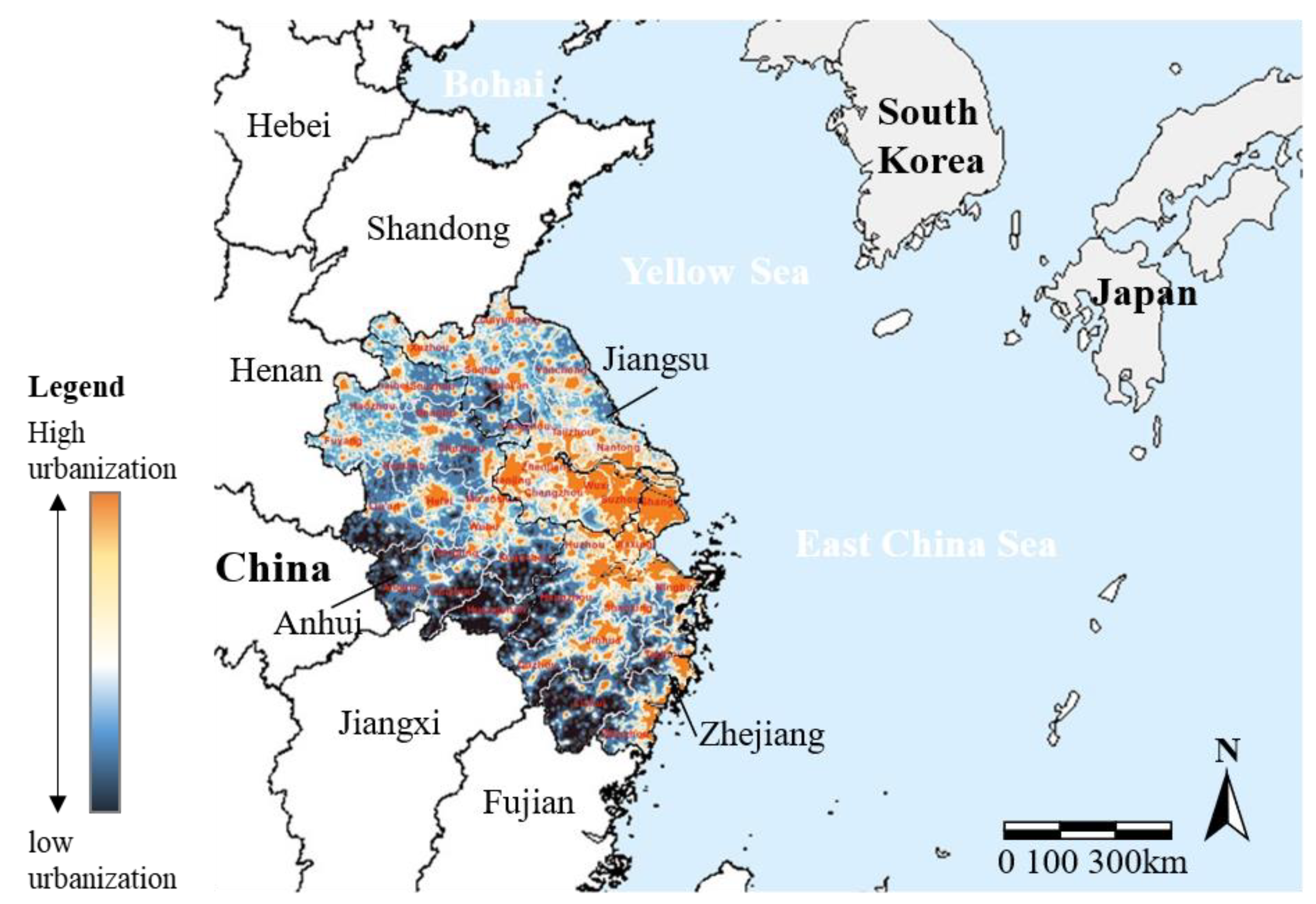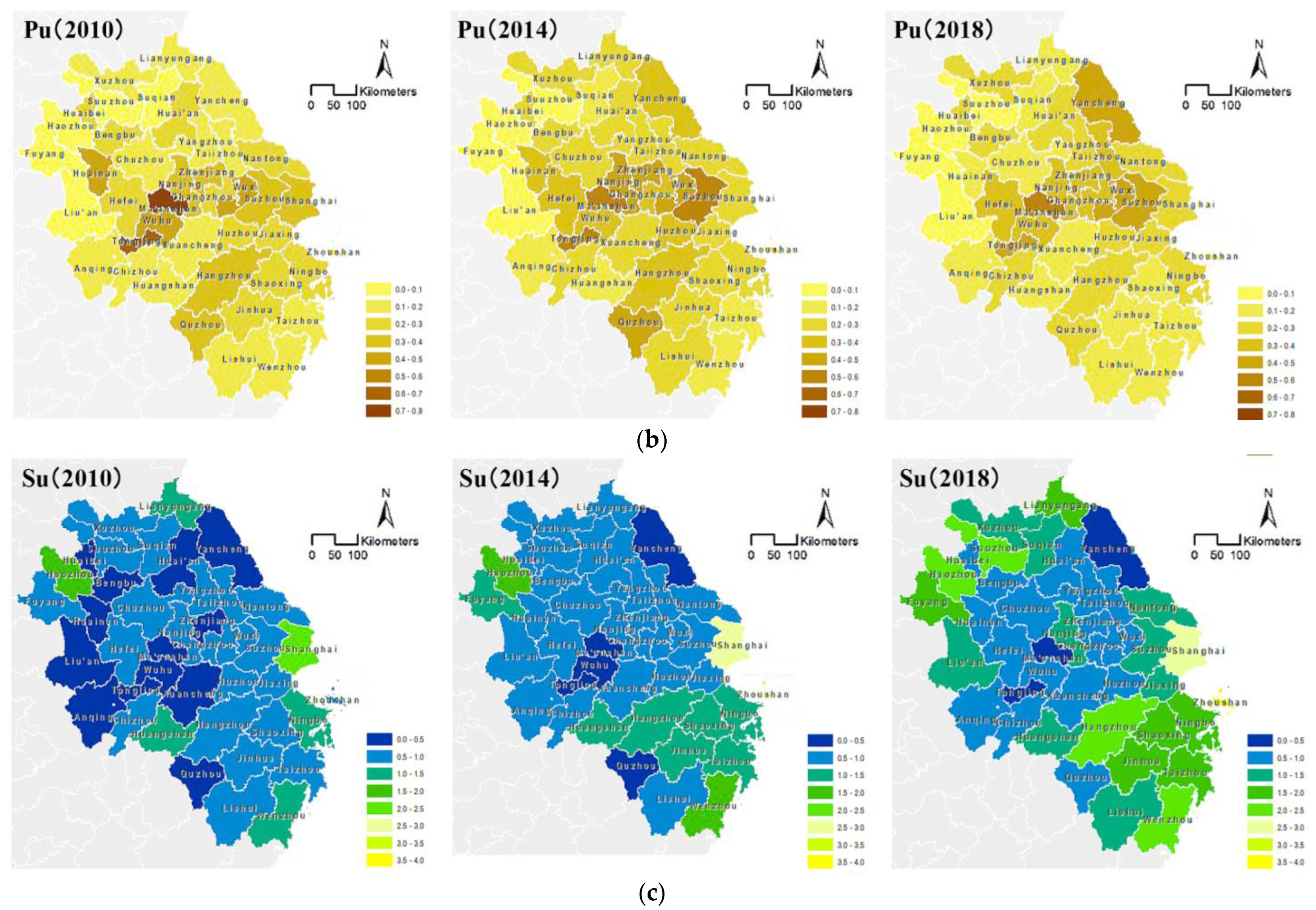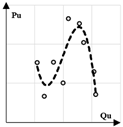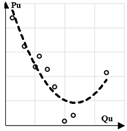The Spatiotemporal Variation Characteristics of Urban Sustainability Based on the SDGs in Yangtze River Delta, China
Abstract
:1. Introduction
2. Literature Overview and Research Objective
2.1. Sustainable Development and Its Evaluation System
2.2. The Exploration of Urban Characteristics through Spatiotemporal Distribution
2.3. Chinese Urban Development toward Sustainability
3. Methodology
3.1. Research Framework
3.2. Study Area
3.3. Urban Sustainability Assessment System
3.3.1. Indicator System
3.3.2. Data Source and Processing
3.4. Spatiotemporal Methodologies Based on Statistics and Geoinformatics
3.4.1. Curve Estimation Regression
3.4.2. Geographic Distributions
4. Empirical Results of Spatiotemporal Variation
4.1. The Evaluation Results through the Temporal Statistical Analysis
4.1.1. Temporal Performance and Urban Characteristic Diagnosis
4.1.2. Temporal Performance and Urban Characteristic Diagnosis
4.2. Spatial–Temporal Distribution and Evolution Characteristics
4.2.1. Spatiotemporal Variation Patterns of Urban Sustainability
4.2.2. Evolution Characteristics of Regional Structure
5. Discussion
6. Conclusions
- The sustainability of the urban environment in the Yangtze River Delta shows obvious differences and spatial heterogeneity. By 2018, there are still 19 cities in an unsustainable state of development. From the perspective of the regional structure of the whole megalopolis, the gap between the East and the West has changed to the gap between the North and the South and continues to increase. It is necessary to formulate a master plan for integrated regional development on rationally distributing and efficiently gathering various production factors to prioritize the development of cities in the northwest, so as to achieve a balanced development.
- From two major dimensions of evaluation, the quality of the built environment (Qu) of the Yangtze River Delta appears high in the Southeast than in the Northwest, while the urban environmental pressure (Pu) develops from the center to the North at a rapid rate. Fortunately, after a certain level of economic growth in southern cities, it has driven the rapid adjustment of the industrial structure, which is good for the environment. However, this has led to the blind consumption of resources by northwestern cities to reduce the gap. Therefore, it is very important to build an inter-regional cooperation platform, eliminate confrontation, and establish mutual assistance in technological, industrial, and many other aspects.
- A curve estimation regression analysis of the relationship between and has revealed five distinct types of urban development trends in the Yangtze River Delta. Among them, the inverted U-shaped and negative linear types of cities mean that the environmental load caused by the improvement of is less than in other cities. But the inverted U-shaped city is relatively sensitive to environmental changes due to environmental degradation and may rebound due to minor factors. This benign development trend needs to be maintained by insisting on the implementation of energy-saving and emission reduction. In order to avoid turning into an unstable S-shaped type of city, we should prevent overexploitation or the overspeed of urbanization, and instead implement a constant focus on seeking to balance urban development with the environment. However, cities of S-shaped, U-shaped, and positive linear types are facing different degrees of environmental degradation. Decision-makers should appropriately slow down the speed of urbanization and give priority to taking targeted measures to deal with urban environmental problems in order to minimize the impact of urban development on the environment. Also, we need to strengthen sustainable publicity efforts to raise public awareness of environmental protection in the near future.
Author Contributions
Funding
Institutional Review Board Statement
Informed Consent Statement
Data Availability Statement
Acknowledgments
Conflicts of Interest
References
- Habitat, United Nations. World Cities Report 2016: Urbanization and Development: Emerging Futures; United Nations: Nairobi, Kenya, 2016. [Google Scholar]
- Chief Executives Board. UN System-Wide Strategy on Sustainable Urban Development; United Nations: Nairobi, Kenya, 2017. [Google Scholar]
- Xia, C.; Chen, B. Urban Land-Carbon Nexus Based on Ecological Network Analysis. Appl. Energy 2020, 276, 115465. [Google Scholar] [CrossRef]
- Xia, C.; Xiang, M.; Fang, K.; Li, Y.; Ye, Y.; Shi, Z.; Liu, J. Spatial-Temporal Distribution of Carbon Emissions by Daily Travel and Its Response to Urban Form: A Case Study of Hangzhou, China. J. Clean. Prod. 2020, 257, 120797. [Google Scholar] [CrossRef]
- Bai, X.; Shi, P.; Liu, Y. Society: Realizing China’s Urban Dream. Nature 2014, 509, 158–160. [Google Scholar] [CrossRef] [PubMed] [Green Version]
- Bai, X.; Dawson, R.J.; Ürge-Vorsatz, D.; Delgado, G.C.; Salisu Barau, A.; Dhakal, S.; Dodman, D.; Leonardsen, L.; Masson-Delmotte, V.; Roberts, D.C. Six Research Priorities for Cities and Climate Change. Nature 2018, 555, 23–25. [Google Scholar] [CrossRef] [PubMed]
- Finco, A.; Nijkamp, P. Pathways to Urban Sustainability. J. Environ. Policy Plan. 2001, 3, 289–302. [Google Scholar] [CrossRef]
- WHO. Preventing Noncommunicable Diseases (NCDs) by Reducing Environmental Risk Factors; WHO: Geneva, Switzerland, 2017. [Google Scholar]
- Che, X.; English, A.; Lu, J.; Chen, Y.D. Improving the Effectiveness of Planning EIA (PEIA) in China: Integrating Planning and Assessment during the Preparation of Shenzhen’s Master Urban Plan. Environ. Impact Assess. Rev. 2011, 31, 561–571. [Google Scholar] [CrossRef]
- Moore, T.H.M.; Kesten, J.M.; López-López, J.A.; Ijaz, S.; McAleenan, A.; Richards, A.; Gray, S.; Savović, J.; Audrey, S. The Effects of Changes to the Built Environment on the Mental Health and Well-Being of Adults: Systematic Review. Health Place 2018, 53, 237–257. [Google Scholar] [CrossRef] [PubMed]
- Iimi, A. Urbanization and Development of Infrastructure in the East Asian Region. JBICI Rev. 2005, 10, 88–109. [Google Scholar]
- Surya, B.; Ahmad, D.N.A.; Sakti, H.H.; Sahban, H. Land Use Change, Spatial Interaction, and Sustainable Development in the Metropolitan Urban Areas, South Sulawesi Province, Indonesia. Land 2020, 9, 95. [Google Scholar] [CrossRef] [Green Version]
- Coussens, C.; Hanna, K. Rebuilding the Unity of Health and the Environment: A New Vision of Environmental Health for the 21st Century; National Academies Press: Washington, DC, USA, 2001; ISBN 030907259X. [Google Scholar]
- Balaban, O.; Doll, C.N.H. Cities, Biodiversity and Governance; UNU-IAS: Yokohama, Japan, 2010. [Google Scholar]
- Valencia, S.C.; Simon, D.; Croese, S.; Nordqvist, J.; Oloko, M.; Sharma, T.; Taylor Buck, N.; Versace, I. Adapting the Sustainable Development Goals and the New Urban Agenda to the City Level: Initial Reflections from a Comparative Research Project. Int. J. Urban Sustain. Dev. 2019, 11, 4–23. [Google Scholar] [CrossRef] [Green Version]
- Sharifi, A. Urban Sustainability Assessment: An Overview and Bibliometric Analysis. Ecol. Indic. 2020, 121, 107102. [Google Scholar] [CrossRef]
- Merino-Saum, A.; Halla, P.; Superti, V.; Boesch, A.; Binder, C.R. Indicators for Urban Sustainability: Key Lessons from a Systematic Analysis of 67 Measurement Initiatives. Ecol. Indic. 2020, 119, 106879. [Google Scholar] [CrossRef]
- Deng, W.; Peng, Z.; Tang, Y. A Quick Assessment Method to Evaluate Sustainability of Urban Built Environment: Case Studies of Four Large-Sized Chinese Cities. Cities 2019, 89, 57–69. [Google Scholar] [CrossRef]
- Steiniger, S.; Wagemann, E.; de la Barrera, F.; Molinos-Senante, M.; Villegas, R.; de la Fuente, H.; Vives, A.; Arce, G.; Herrera, J.-C.; Carrasco, J.-A. Localising Urban Sustainability Indicators: The CEDEUS Indicator Set, and Lessons from an Expert-Driven Process. Cities 2020, 101, 102683. [Google Scholar] [CrossRef]
- Buck, K.D.; Summers, J.K.; Smith, L.M. Investigating the Relationship between Environmental Quality, Socio-Spatial Segregation and the Social Dimension of Sustainability in US Urban Areas. Sustain. Cities Soc. 2021, 67, 102732. [Google Scholar] [CrossRef]
- Tan, Y.; Xu, H.; Zhang, X. Sustainable Urbanization in China: A Comprehensive Literature Review. Cities 2016, 55, 82–93. [Google Scholar] [CrossRef]
- Shen, L.; Zhou, J. Examining the Effectiveness of Indicators for Guiding Sustainable Urbanization in China. Habitat Int. 2014, 44, 111–120. [Google Scholar] [CrossRef]
- Xiang, N. A Review on the Research and Practice of City Sustainable Development Indicators and Indices. In IOP Conference Series: Earth and Environmental Science, Proceedings of the 5th International Conferences on Geological, Geographical, Aerospaces and Earth Sciences 2017 (5th AeroEarth 2017) Bali, Indonesia, 20–21 May 2017; IOP Publishing: Bristol, UK, 2017; Volume 88, p. 12024. [Google Scholar]
- Parris, T.M.; Kates, R.W. Characterizing and Measuring Sustainable Development. Annu. Rev. Environ. Resour. 2003, 28, 559–586. [Google Scholar] [CrossRef]
- Chen, Y.; Chen, A.; Zhang, D. Evaluation of Resources and Environmental Carrying Capacity and Its Spatial-Temporal Dynamic Evolution: A Case Study in Shandong Province, China. Sustain. Cities Soc. 2022, 82, 103916. [Google Scholar] [CrossRef]
- Hemphill, L.; Berry, J.; McGreal, S. An Indicator-Based Approach to Measuring Sustainable Urban Regeneration Performance: Part 1, Conceptual Foundations and Methodological Framework. Urban Stud. 2004, 41, 725–755. [Google Scholar] [CrossRef]
- Xiang, Y.; Wang, X.; He, L.; Wang, W.; Moran, W. Spatial-Temporal Analysis of Environmental Data of North Beijing District Using Hilbert-Huang Transform. PLoS ONE 2016, 11, e0167662. [Google Scholar] [CrossRef]
- Amato, F.; Guignard, F.; Robert, S.; Kanevski, M. A Novel Framework for Spatio-Temporal Prediction of Environmental Data Using Deep Learning. Sci. Rep. 2020, 10, 22243. [Google Scholar] [CrossRef] [PubMed]
- Wang, Q.; Liu, C.; Hou, Y.; Xin, F.; Mao, Z.; Xue, X. Study of the Spatio-Temporal Variation of Environmental Sustainability at National and Provincial Levels in China. Sci. Total Environ. 2022, 807, 150830. [Google Scholar] [CrossRef]
- Fang, X.; Shi, X.; Gao, W. Measuring Urban Sustainability from the Quality of the Built Environment and Pressure on the Natural Environment in China: A Case Study of the Shandong Peninsula Region. J. Clean. Prod. 2021, 289, 125145. [Google Scholar] [CrossRef]
- United Nations. The Future Is Now–Science for Achieving Sustainable Development; United Nations: New York, NY, USA, 2019. [Google Scholar]
- Irwin, A. Citizen Science: A Study of People, Expertise and Sustainable Development; Routledge: Oxford, UK, 2002; ISBN 0203202392. [Google Scholar]
- Ciegis, R.; Ramanauskiene, J.; Martinkus, B. The Concept of Sustainable Development and Its Use for Sustainability Scenarios. Eng. Econ. 2009, 62, 28–37. [Google Scholar]
- Hák, T.; Janoušková, S.; Moldan, B. Sustainable Development Goals: A Need for Relevant Indicators. Ecol. Indic. 2016, 60, 565–573. [Google Scholar] [CrossRef]
- Sharifi, A.; Kawakubo, S.; Milovidova, A. Urban Sustainability Assessment Tools: Toward Integrating Smart City Indicators. In Urban Systems Design; Elsevier: Amsterdam, The Netherlands, 2020; pp. 345–372. [Google Scholar]
- Ameen, R.F.M.; Mourshed, M.; Li, H. A Critical Review of Environmental Assessment Tools for Sustainable Urban Design. Environ. Impact Assess. Rev. 2015, 55, 110–125. [Google Scholar] [CrossRef]
- Kaur, H.; Garg, P. Urban Sustainability Assessment Tools: A Review. J. Clean. Prod. 2019, 210, 146–158. [Google Scholar] [CrossRef]
- Cohen, M. A Systematic Review of Urban Sustainability Assessment Literature. Sustainability 2017, 9, 2048. [Google Scholar] [CrossRef] [Green Version]
- He, B.-J.; Zhao, D.-X.; Zhu, J.; Darko, A.; Gou, Z.-H. Promoting and Implementing Urban Sustainability in China: An Integration of Sustainable Initiatives at Different Urban Scales. Habitat Int. 2018, 82, 83–93. [Google Scholar] [CrossRef]
- Kawazu, Y.; Shimada, N.; Yokoo, N.; Oka, T. Comparison of the Assessment Results of BREEAM, LEED, GBTool and CASBEE. In Proceedings of the Sustainable Building Conference (SB05), Tokyo, Japan, 27–29 September 2005; pp. 1700–1705. [Google Scholar]
- Waas, T.; Hugé, J.; Block, T.; Wright, T.; Benitez-Capistros, F.; Verbruggen, A. Sustainability Assessment and Indicators: Tools in a Decision-Making Strategy for Sustainable Development. Sustainability 2014, 6, 5512–5534. [Google Scholar] [CrossRef] [Green Version]
- Ameen, R.F.M.; Mourshed, M. Urban Sustainability Assessment Framework Development: The Ranking and Weighting of Sustainability Indicators Using Analytic Hierarchy Process. Sustain. Cities Soc. 2019, 44, 356–366. [Google Scholar] [CrossRef]
- Zhou, Q.; Dong, Z.F.; Pan, R.X. Analysis and Policy Recommendations. In Sustainable Development Report 2019; United Nations Publications: New York, NY, USA, 2021. (In Chinese) [Google Scholar]
- Javanbakht, M.; Boloorani, A.D.; Kiavarz, M.; Samany, N.N.; Zebardast, L.; Zangiabadi, M. Spatial-Temporal Analysis of Urban Environmental Quality of Tehran, Iran. Ecol. Indic. 2021, 120, 106901. [Google Scholar] [CrossRef]
- Xu, X.; Gao, J.; Zhang, Z.; Fu, J. An Assessment of Chinese Pathways to Implement the UN Sustainable Development Goal-11 (SDG-11)—A Case Study of the Yangtze River Delta Urban Agglomeration. Int. J. Environ. Res. Public Health 2019, 16, 2288. [Google Scholar] [CrossRef] [Green Version]
- Wang, Y.; Lu, Y.; He, G.; Wang, C.; Yuan, J.; Cao, X. Spatial Variability of Sustainable Development Goals in China: A Provincial Level Evaluation. Environ. Dev. 2020, 35, 100483. [Google Scholar] [CrossRef]
- Li, J.; Li, C.; Zhu, F.; Song, C.; Wu, J. Spatiotemporal Pattern of Urbanization in Shanghai, China between 1989 and 2005. Landsc. Ecol. 2013, 28, 1545–1565. [Google Scholar] [CrossRef]
- Mack, T.J.; Chornack, M.P.; Taher, M.R. Groundwater-Level Trends and Implications for Sustainable Water Use in the Kabul Basin, Afghanistan. Environ. Syst. Decis. 2013, 33, 457–467. [Google Scholar] [CrossRef] [Green Version]
- Campagna, M. GIS for Sustainable Development. In GIS for Sustainable Development; CRC Press: Boca Raton, FL, USA, 2005; pp. 23–40. ISBN 0429125011. [Google Scholar]
- Brown, G.; Reed, P.; Raymond, C.M. Mapping Place Values: 10 Lessons from Two Decades of Public Participation GIS Empirical Research. Appl. Geogr. 2020, 116, 102156. [Google Scholar] [CrossRef]
- Schultz, P.W.; Milfont, T.L.; Chance, R.C.; Tronu, G.; Luís, S.; Ando, K.; Rasool, F.; Roose, P.L.; Ogunbode, C.A.; Castro, J. Cross-Cultural Evidence for Spatial Bias in Beliefs about the Severity of Environmental Problems. Environ. Behav. 2014, 46, 267–302. [Google Scholar] [CrossRef]
- Huang, X.; Li, Y.; Hay, I. Polycentric City-Regions in the State-Scalar Politics of Land Development: The Case of China. Land Use Policy 2016, 59, 168–175. [Google Scholar] [CrossRef]
- Gollin, D.; Jedwab, R.; Vollrath, D. Urbanization with and without Industrialization. J. Econ. Growth 2016, 21, 35–70. [Google Scholar] [CrossRef]
- Hao, Y.; Zheng, S.; Zhao, M.; Wu, H.; Guo, Y.; Li, Y. Reexamining the Relationships among Urbanization, Industrial Structure, and Environmental Pollution in China—New Evidence Using the Dynamic Threshold Panel Model. Energy Rep. 2020, 6, 28–39. [Google Scholar] [CrossRef]
- Wang, J.; Wang, S.; Li, S.; Feng, K. Coupling Analysis of Urbanization and Energy-Environment Efficiency: Evidence from Guangdong Province. Appl. Energy 2019, 254, 113650. [Google Scholar] [CrossRef]
- Hall, B.J.; Leong, T.I.; Chen, W. Rapid Urbanization in China. In Urban Health; Oxford University Press: Oxford, UK, 2019; p. 356. ISBN 0190915862. [Google Scholar]
- Liu, Y.; Zhang, X.; Pan, X.; Ma, X.; Tang, M. The Spatial Integration and Coordinated Industrial Development of Urban Agglomerations in the Yangtze River Economic Belt, China. Cities 2020, 104, 102801. [Google Scholar] [CrossRef]
- Zheng, Y.; Xu, W.; Dai, L. Urban Growth in a Post-2000 Central Chinese Urban Agglomeration: Case Study of the Changzhutan Region. Growth Change 2020, 51, 464–487. [Google Scholar] [CrossRef] [Green Version]
- Fang, C.; Yu, D. China’s Urban Agglomerations; Springer: Berlin/Heidelberg, Germany, 2020; ISBN 9811515514. [Google Scholar]
- Wu, F. China’s Emergent City-region Governance: A New Form of State Spatial Selectivity through State-orchestrated Rescaling. Int. J. Urban Reg. Res. 2016, 40, 1134–1151. [Google Scholar] [CrossRef]
- Zeng, Y.-Y. Urban Public Safety Risk Assessment of 35 Cities in China Based on Context-Dependent DEA Approach and DEASort. In Proceedings of the 2019 International Conference on Building Energy Conservation, Thermal Safety and Environmental Pollution Control (ICBTE 2019), Hefei, China, 1–3 November 2019; EDP Sciences, Wuhan University of Technology: Wuhan, China, 2019; Volume 136. [Google Scholar]
- National Bureau of Statistics China Statistical Yearbook. Available online: http://www.stats.gov.cn/ (accessed on 21 January 2023).
- Gottmann, J. Megalopolitan Systems around the World. Hrvatski Geografski Glasnik 1976, 38, 103–111. [Google Scholar]
- Kamal-Chaoui, L.; Leeman, E.; Rufei, Z. Urban Trends and Policy in China. In OECD Regional Development Working Papers; No. 2009/01; OECD Publishing: Paris, France, 2009. [Google Scholar]
- Ye, L. Urbanization and Urban Governance in China; Springer: Berlin/Heidelberg, Germany, 2018; ISBN 1137578246. [Google Scholar]
- Wikipedia Yangtze Delta. Available online: https://en.wikipedia.org/wiki/Yangtze_Delta (accessed on 24 April 2023).
- Peng, B.; Chen, H.; Elahi, E.; Wei, G. Study on the Spatial Differentiation of Environmental Governance Performance of Yangtze River Urban Agglomeration in Jiangsu Province of China. Land Use Policy 2020, 99, 105063. [Google Scholar] [CrossRef]
- Xu, X.; Zhang, Z.; Long, T.; Sun, S.; Gao, J. Mega-City Region Sustainability Assessment and Obstacles Identification with GIS–Entropy–TOPSIS Model: A Case in Yangtze River Delta Urban Agglomeration, China. J. Clean. Prod. 2021, 294, 126147. [Google Scholar] [CrossRef]
- Zhu, X.; Gao, W.; Zhou, N.; Kammen, D.M.; Wu, Y.; Zhang, Y.; Chen, W. The Inhabited Environment, Infrastructure Development and Advanced Urbanization in China’s Yangtze River Delta Region. Environ. Res. Lett. 2016, 11, 124020. [Google Scholar] [CrossRef]
- Zhang, Y.; Sun, M.; Yang, R.; Li, X.; Zhang, L.; Li, M. Decoupling Water Environment Pressures from Economic Growth in the Yangtze River Economic Belt, China. Ecol. Indic. 2021, 122, 107314. [Google Scholar] [CrossRef]
- Liu, J.; Tian, Y.; Huang, K.; Yi, T. Spatial-Temporal Differentiation of the Coupling Coordinated Development of Regional Energy-Economy-Ecology System: A Case Study of the Yangtze River Economic Belt. Ecol. Indic. 2021, 124, 107394. [Google Scholar] [CrossRef]
- Wang, L.; Xue, X.; Shi, Y.; Wang, Z.; Ji, A. A Dynamic Analysis to Evaluate the Environmental Performance of Cities in China. Sustainability 2018, 10, 862. [Google Scholar] [CrossRef] [Green Version]
- Borza, M. The Connection between Efficiency and Sustainability—A Theoretical Approach. Procedia Econ. Financ. 2014, 15, 1355–1363. [Google Scholar] [CrossRef] [Green Version]
- Leibeistein, H. General X-Efficiency Theory & Economic Development; Oxford University Press: Oxford, UK, 1978; ISBN 019502379X. [Google Scholar]
- SRC Stockholm Resilience Centre. Examples of SRC’s Relevant 2030 Agenda Contributions from 2016. In SRC Stockholm Resilience Centre’s (SRC) Contribution to the 2016 Swedish 2030 Agenda HLPF Report; SRC Stockholm Resilience Centre: Stockholm, Sweden, 2017. [Google Scholar]
- Zhu, Z.; Lu, L.; Yao, X.; Zhang, W.; Liu, W. Rethinking Nature: A Pathway towards Sustainable Development. Perspectives. 2020, 38, 6–8. [Google Scholar]
- Folke, C.; Biggs, R.; Norström, A.V.; Reyers, B.; Rockström, J. Social-Ecological Resilience and Biosphere-Based Sustainability Science. Ecol. Soc. 2016, 21, 41. [Google Scholar] [CrossRef]
- Huang, L.; Wu, J.; Yan, L. Defining and Measuring Urban Sustainability: A Review of Indicators. Landsc. Ecol. 2015, 30, 1175–1193. [Google Scholar] [CrossRef]
- Kaiser, H.F. An Index of Factorial Simplicity. Psychometrika 1974, 39, 31–36. [Google Scholar] [CrossRef]
- Efromovich, S. Nonparametric Curve Estimation: Methods, Theory, and Applications; Springer Science & Business Media: Berlin/Heidelberg, Germany, 2008; ISBN 0387226389. [Google Scholar]
- Wieland, R.; Voss, M.; Holtmann, X.; Mirschel, W.; Ajibefun, I. Spatial Analysis and Modeling Tool. Ecol. Inform. 2006, 1, 67–76. [Google Scholar] [CrossRef]
- Getis, A.; Anselin, L.; Lea, A.; Ferguson, M.; Miller, H. Spatial Analysis and Modeling in a GIS Environment. In A Research Agenda for Geographic Information Science; CRC Press: Boca Raton, FL, USA, 2004; pp. 157–196. ISBN 0429122942. [Google Scholar]
- Kacyira, A.K. Addressing the Sustainable Urbanization Challenge. UN Chron. 2012, 49, 58–60. [Google Scholar] [CrossRef]
- Cohen, B. Urbanization in Developing Countries: Current Trends, Future Projections, and Key Challenges for Sustainability. Technol. Soc. 2006, 28, 63–80. [Google Scholar] [CrossRef]
- Li, T.; Wang, Y.; Zhao, D. Environmental Kuznets Curve in China: New Evidence from Dynamic Panel Analysis. Energy Policy 2016, 91, 138–147. [Google Scholar] [CrossRef]
- Dasgupta, S.; Laplante, B.; Wang, H.; Wheeler, D. Confronting the Environmental Kuznets Curve. J. Econ. Perspect. 2002, 16, 147–168. [Google Scholar] [CrossRef] [Green Version]
- Alcott, B. Jevons’ Paradox. Ecol. Econ. 2005, 54, 9–21. [Google Scholar] [CrossRef]
- Ruibo, H.; Linna, W. Challenges and Opportunities Facing China’s Urban Development in the New Era. China Perspect. 2013, 2013, 15–27. [Google Scholar] [CrossRef] [Green Version]
- UN-Habitat. Sustainable Urbanization in Asia: A Sourcebook for Local Governments; UN-Habitat: Nairobi, Kenya, 2012. [Google Scholar]
- Yang, Z.; Yang, H.; Wang, H. Evaluating Urban Sustainability under Different Development Pathways: A Case Study of the Beijing-Tianjin-Hebei Region. Sustain. Cities Soc. 2020, 61, 102226. [Google Scholar] [CrossRef]
- Zhang, L.; Huang, Q.; He, C.; Yue, H.; Zhao, Q. Assessing the Dynamics of Sustainability for Social-Ecological Systems Based on the Adaptive Cycle Framework: A Case Study in the Beijing-Tianjin-Hebei Urban Agglomeration. Sustain. Cities Soc. 2021, 70, 102899. [Google Scholar] [CrossRef]
- Cao, S.; Lv, Y.; Zheng, H.; Wang, X. Challenges Facing China’s Unbalanced Urbanization Strategy. Land Use Policy 2014, 39, 412–415. [Google Scholar] [CrossRef]
- Cao, X.; Zhou, B.; Shi, Y.; Pei, X. The Unbalanced Analysis of Economic Urbanization—A Case Study of Typical Cities in China. ISPRS Int. J. Geoinf. 2020, 9, 13. [Google Scholar] [CrossRef] [Green Version]
- Takamiya, K. People’s Republic of China: 2019 Article IV Consultation-Press Release. In Recently Acceded Members of the World Trade Organization; Springer: Berlin/Heidelberg, Germany, 2019; pp. 137–191. [Google Scholar]









| Basic Dimensions | Indicator Categories | Weight (%) | Represented Indicators Description | Weight (%) |
|---|---|---|---|---|
| Urban built environment quality () | Urbanization economies () | 33.33 | q1: Urban population percentage (% of total population) | 8.56 |
| q2: GDP per capita (USD/person) | 8.52 | |||
| q3: Services value added (% of GDP) | 8.51 | |||
| q4: Income per capita (USD/person) | 7.74 | |||
| Infrastructure development () | 33.33 | q5: Construction land per capita (m2/person) | 9.30 | |
| q6: Residential floor space per capita (m2/person) | 9.00 | |||
| q7: Green area per capita (m2/person) | 9.01 | |||
| q8: Road area per capita (m2/person) | 6.02 | |||
| Urban attraction () | 33.33 | q9: Number of tourists (1000 person) | 10.99 | |
| q10: Foreign direct investment (USD 106) | 10.09 | |||
| q11: Export volume of trade (USD 106) | 12.25 | |||
| Urban environmental pressure (PU) | Resource consumption () | 50.00 | p1: Energy consumption per capita (GJ/person) | 25.00 |
| p2: Water consumption per capita (ton/person) | 25.00 | |||
| Environmental pollution () | 50.00 | p3: Wastewater discharged per capita (ton/person) | 10.47 | |
| p4: SO2 discharged per capita (kg/person) | 15.03 | |||
| p5: NOx discharged per capita (kg/person) | 9.56 | |||
| p6: Soot and dust discharged per capita (kg/person) | 14.94 |
| Model | Quadratic Model | Linear Model | Cubic Model | Linear Model | Quadratic Model | - |
|---|---|---|---|---|---|---|
| Type |  |  |  |  |  | |
| Interaction relationship | Inverted U-shaped relationship | Negative linear relationship | S-shaped relationship | Positive linear relationship | U-shaped relationship | No significant relationship |
| Related cities | Zhenjiang, Wenzhou, Jinhua, Nantong, Yangzhou, Shaoxing, Jiaxing, Huaibei, Yancheng, Suqian, Chizhou, Chuzhou, Anqing, Fuyang, Suuzhou, Bozhou, Nanjing, Hangzhou, and Suzhou | Zhoushan and Taizhou | Ningbo, Xuzhou, Huzhou, Lianyungang, Lishui, Quzhou, and Bengbu | Hefei, Changzhou, Taiizhou, Huangshan, and Liu’an | Huai’an | Shanghai, Wuxi, Ma’anshan, Wuhu, Huainan, Tongling, and Xuancheng |
Disclaimer/Publisher’s Note: The statements, opinions and data contained in all publications are solely those of the individual author(s) and contributor(s) and not of MDPI and/or the editor(s). MDPI and/or the editor(s) disclaim responsibility for any injury to people or property resulting from any ideas, methods, instructions or products referred to in the content. |
© 2023 by the authors. Licensee MDPI, Basel, Switzerland. This article is an open access article distributed under the terms and conditions of the Creative Commons Attribution (CC BY) license (https://creativecommons.org/licenses/by/4.0/).
Share and Cite
Fang, X.; Shi, X.; Phillips, T.K.; Du, P.; Gao, W. The Spatiotemporal Variation Characteristics of Urban Sustainability Based on the SDGs in Yangtze River Delta, China. Buildings 2023, 13, 1909. https://doi.org/10.3390/buildings13081909
Fang X, Shi X, Phillips TK, Du P, Gao W. The Spatiotemporal Variation Characteristics of Urban Sustainability Based on the SDGs in Yangtze River Delta, China. Buildings. 2023; 13(8):1909. https://doi.org/10.3390/buildings13081909
Chicago/Turabian StyleFang, Xue, Xinyu Shi, Tyson Keen Phillips, Peng Du, and Weijun Gao. 2023. "The Spatiotemporal Variation Characteristics of Urban Sustainability Based on the SDGs in Yangtze River Delta, China" Buildings 13, no. 8: 1909. https://doi.org/10.3390/buildings13081909






